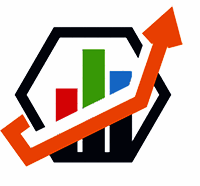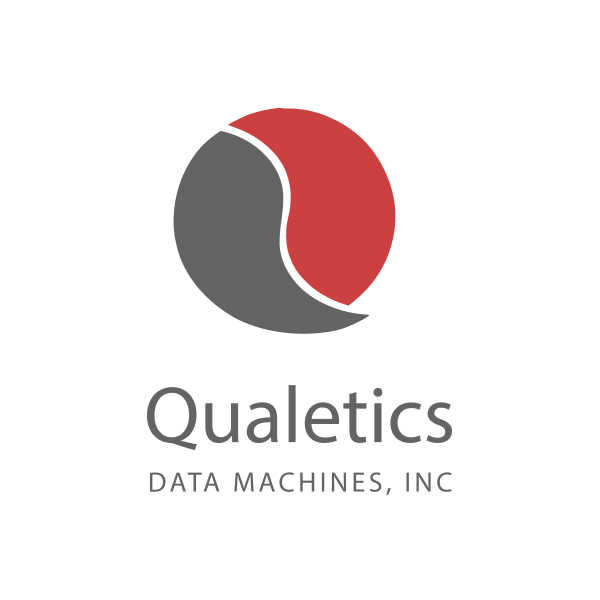What Is Embedded Analytics Software?
Businesses can easily include analytical skills into their current applications and systems by using embedded analytics software, which is a potent tool. It enables users to retrieve and examine data from within their well-known and routine business tools, like project management, HR, and CRM software. Fundamentally, embedded analytics software is made to offer improved reporting and data visualization features without requiring complicated coding or a stand-alone analytics application.
Businesses can obtain real-time insights and make data-driven choices without interfering with their regular operations by integrating analytics into their current workflows. The potential of embedded analytics software to democratize data making it available to all users within an organization, regardless of technical proficiency is one of its main advantages.
This gives teams the ability to examine data and spot trends and patterns, revealing important information that can spur company expansion. Additionally, interactive dashboards and reports that can be tailored to meet particular corporate needs and goals make decision-making simpler with embedded analytics. This gives companies the ability to track performance, keep an eye on important metrics, and make data-driven choices instantly.
For companies of all sizes, embedded analytics software provides a safe and scalable solution in addition to being accessible and simple to use. Embedded analytics provides a safe method of accessing and analyzing sensitive data, reducing the possibility of data breaches as data security and privacy gain importance.
Considerations like security features, scalability, customizability, and ease of integration are crucial while searching for an embedded analytics software solution. Businesses can obtain a competitive edge by utilizing their data in a significant and useful manner by selecting the best embedded analytics software.
What Are The Recent Trends In Embedded Analytics Software?
In response to the increasing need for data-driven insights, embedded analytics software has recently seen a shift toward more accessibility, flexibility, and sophisticated features. Embedded analytics software has become an essential tool for firms to stay competitive and make educated decisions in an increasingly data-centric corporate environment.
The shift to cloud-based solutions is one of the major developments in embedded analytics software. Businesses are adopting cloud computing because of its scalability and flexibility, and embedded analytics software is no exception. Cloud-based solutions provide reduced infrastructure costs, quicker processing speeds, and simpler data access. Businesses may more easily extract insights from their data because to its smooth connection with other cloud-based apps.
Self-service analytics, which allows consumers to quickly create and customize reports without the assistance of IT specialists, is another trend. This facilitates quicker decision-making and gives business users the ability to more creatively explore their data. Because of this, embedded analytics software is getting easier to use and more intuitive, enabling people of various skill levels to take advantage of data.
Furthermore, real-time analytics and predictive features in embedded analytics software are becoming more and more in demand. Businesses must analyze and act on data in real-time to stay ahead of the competition due to the growing volume and variety of data created. As a result, embedded analytics software is increasingly using AI and machine learning algorithms to deliver real-time insights and forecasts.
With the increasing use of mobile devices in the workplace, embedded analytics software is also becoming more mobile-friendly. Businesses can make decisions more quickly and with more flexibility thanks to mobile dashboards and reports that make it simple to access data while on the go. Finally, another new trend in embedded analytics software is the combination of big data with the Internet of Things (IoT).
A multitude of information is now available to organizations due to the explosion of data from multiple sources. These massive databases may be processed, analyzed, and visualized by embedded analytics software, which gives organizations insightful information. To sum up, embedded analytics software is always changing to satisfy the shifting demands of companies.
This category's most recent trends center on mobile friendliness, real-time analytics, accessibility, customisation, and the incorporation of cutting-edge technology like AI and IoT. It is crucial for buyers to take these trends into account and select a solution that fits both your present requirements and your long-term expansion plan.
Benefits Of Using Embedded Analytics Software
There are many advantages to using embedded analytics software for companies trying to extract insightful information from their data. These technologies have sophisticated features that enable reporting, visualization, and real-time data analysis within pre-existing applications. This enables users to make data-driven decisions directly within their processes and does away with the need for additional analytics tools. We will go over the main advantages of utilizing embedded analytics software in this buyer's guide to assist you in making an informed choice for your company.
1. Simplifies Data Analysis: The capacity of embedded analytics software to simplify data analysis is one of its main advantages. Embedded analytics enables users to perform data analysis and visualization right within their current applications, eliminating the need to export and analyze data in separate tools. This guarantees that the insights are pertinent to the ongoing business activity while also saving time.
2. Promotes User Adoption: Because embedded analytics software blends more perfectly with pre-existing applications, users may more easily embrace and make use of the analytics features without having to become familiar with a whole new tool. This increases user adoption and makes it possible for more people in the company to gain from data insights.
3. Improves Data Accessibility: All users, not just data analysts or IT specialists, may now readily access data thanks to embedded analytics. Employees at all levels may now access and use data to make well-informed decisions, enabling the democratization of data. The organization's culture becomes more data-driven as a result of this accessibility.
4. Facilitates Better Decision-Making: Businesses can make better decisions more quickly when they have access to real-time data analysis and insights. Users may swiftly evaluate and comprehend data with embedded analytics, allowing them to recognize patterns, seize opportunities, and make well-informed decisions that can propel company expansion.
5. Saves Money: Embedded analytics software can help firms save money on maintenance, training, and licensing by doing away with the requirement for separate analytics tools. Additionally, staff save a great deal of time as a result of the expedited data processing procedure, freeing them up to concentrate on more important duties.
6. Scalable And Customizable: Businesses may adapt the analytics features to meet their own requirements thanks to the high degree of flexibility that embedded analytics software provides. In addition to offering a smooth user experience, this enables scalability as company requirements evolve.
Important Factors To Consider While Purchasing Embedded Analytics Software?
There are a number of crucial considerations to make when thinking about investing in embedded analytics software. These elements may affect the software's efficacy and success, which may in turn affect your company's return on investment. When assessing embedded analytics software, bear the following points in mind:
1. Data Integration Capabilities: Knowing how the program will interface with your current data sources is essential. Verify that the program can connect to your databases, data warehouses, and other data sources with ease.
2. Personalization And Customization: Seek out software that provides a high level of personalization and customization options. This will make the analytics more user-friendly and enable you to customize them to your unique business requirements.
3. User Interface And Visualization: The software's usability and uptake are greatly influenced by the user interface and data visualization. To make analysis and decision-making simpler, look for software that provides visually appealing and easy-to-use dashboards and reports.
4. Scalability And Flexibility: Take your company's future expansion and scalability into account when assessing embedded analytics software. Select software that can manage the volume and complexity of your data right now and that can be easily adjusted to meet your evolving needs.
5. Security And Compliance: To secure your data and adhere to industry rules like GDPR, HIPAA, etc., it is crucial to make sure the software you select has strong security features in place.
6. assistance And Training: Successful deployment and uptake of embedded analytics software depend on adequate assistance and training. To assist your team catch up quickly, pick a vendor that provides extensive support and training alternatives.
7. Pricing And ROI: Examine the pricing structures and confirm that you comprehend the software's total cost of ownership. Additionally, think about how the software will benefit your company and the possible return on investment.
8. Vendor Experience And Reputation: Research the vendor's market experience and reputation. To better grasp their credibility, take into account elements like accolades, vendor collaborations, and customer reviews.
9. Future Roadmap And Updates: Your analytics software should change along with technology and the business environment. Select a vendor who has a clear plan for the future and a history of providing upgrades and improvements on schedule. When buying embedded analytics software for your company, you may make an informed choice by taking these considerations into account. To make sure the software you select complements your overall plan, keep in mind your unique business demands and objectives.
What Are The Key Features To Look For In Embedded Analytics Software?
It is crucial to search for essential elements that will improve your data analysis and decision-making procedures when contemplating embedded analytics software for your company. These features will boost productivity and performance overall in addition to offering insightful information. The following are the most important characteristics of embedded analytics software:
1. Customizable Dashboards: You may construct visual representations of your data that are suited to your unique company needs thanks to an intuitive interface with dashboards that can be customized. This facilitates data interpretation and analysis, resulting in better decision-making.
2. Real-Time Data Integration: More precise and current insights are made possible by the capacity to combine real-time data from several sources, including databases, apps, and cloud platforms. Additionally, this feature guarantees data consistency across all platforms.
3. Data Security: Data security is an important consideration for any software. To safeguard your private data, look for integrated analytics software that provides secure data hosting and high-level encryption.
4. Predictive Analytics: These cutting-edge capabilities analyze future trends and results by analyzing patterns in historical data. This enables companies to spot possible obstacles and chances to maintain their market leadership.
5. Unique Visualizations: Understanding complicated data sets and simplifying their presentation requires the ability to generate unique visualizations. Seek out software that allows you to create custom visualizations and has a large library of charts, graphs, and maps to pick from.
6. Mobile Compatibility: Having access to data while on the go is crucial in the fast-paced world of today. You may use your mobile device to get data and insights from any location at any time using embedded analytics software that is compatible with mobile devices.
7. Simple Integration: Verify that the embedded analytics software can be readily integrated with other tools and apps you use and that it is compatible with your current systems.
8. Scalability: Your data will expand together with your business. Choose software with scalability so that it can accommodate growing numbers of users and data without sacrificing performance or speed.
9. User-Friendly Interface: Companies of all sizes need an interface that is simple to use and intuitive. Choose software that is simple to use and doesn't demand a lot of technical knowledge or expertise.
10. Cost-Effective: Lastly, take the software's cost-effectiveness into account. Seek for elements that enhance your company's worth without going over budget. Make sure to select the program that best suits your budget because some provide various price options.
Why Do Businesses Need Embedded Analytics Software?
In today's data-driven environment, embedded analytics software is a potent instrument that is becoming more and more necessary for companies. This program offers real-time data and insights that facilitate well-informed decision-making and propel business expansion, and it interfaces easily with current business applications. To remain competitive in their respective industries, firms require embedded analytics software.
Success in the fast-paced corporate world of today depends on having a solid understanding of and ability to use data. Businesses can make data-driven decisions that provide them an advantage over rivals by using embedded analytics to better understand their clients, markets, and general operations. The capacity of embedded analytics to provide data to employees at all organizational levels is another significant benefit.
Employees may make informed decisions without requiring technical knowledge thanks to the integration of analytics into routine business operations, which gives them access to the most recent data and insights. In addition to increasing productivity, this gives workers the confidence to take responsibility for their work and help the business succeed. Additionally, embedded analytics software is essential for enhancing the general consumer experience.
Businesses can enhance customer satisfaction and personalize their services by better understanding the needs, tastes, and behaviors of their customers through real-time data analysis. Increased client loyalty and retention may follow, both of which are critical for sustained company success. Additionally, by finding inefficiencies and new opportunities, embedded analytics software assists companies in cutting expenses and boosting return on investment.
Businesses may find trends, patterns, and outliers by monitoring key performance indicators and visualizing data. This helps them streamline operations, reduce expenses, and find new sources of income. Lastly, businesses have better control over their data thanks to embedded analytics, which improves data governance and security. Businesses may ensure regulatory compliance and protect sensitive data by using embedded analytics to analyze data usage, define access rights, and monitor data integrity.
How Much Time Is Required To Implement Embedded Analytics Software?
The complexity of the data sources, the degree of customization required, and the team's level of experience are some of the variables that might affect how long it takes to develop embedded analytics software. The implementation procedure often takes a few weeks to many months to complete. Understanding what embedded analytics software is and how it varies from conventional business intelligence (BI) tools is crucial before delving into specifics.
By immediately integrating data analytics into already-existing applications, embedded analytics software enables users to acquire insights and make data-driven decisions without hopping between platforms or tools. Because of its smooth integration, it's the perfect choice for companies who want to give their internal teams or clients a simplified analytics experience.
Determining your precise needs and goals is the first stage in the implementation process. This will assist you in choosing the best embedded analytics program for your requirements. The next step after selecting an appropriate solution is to have your data sources ready. This entails gathering and combining data from multiple sources and converting it into a format that the software can use.
The program must then be set up to meet your company's requirements and, if necessary, your branding. This may entail establishing data links, producing reports and dashboards, and putting security procedures into place. This process may take a few days to a few weeks, depending on the degree of customization and the intricacy of your data.
The software must be thoroughly tested when the first setup is finished. Verifying the performance, functionality, and quality of the data is part of this. Because it guarantees that the program is providing correct and trustworthy insights, the testing phase is essential.
Deploying the embedded analytics software for your end customers is the last phase. This may entail granting access via a different login or incorporating it into your current application. This stage may take a few days to a few weeks, depending on the size of your user base.
What Is The Level Of Customization Available In Embedded Analytics Software?
The degree of customisation offered by embedded analytics software can differ based on the particular product and supplier. But generally speaking, consumers can anticipate a fair number of personalization choices with these kinds of goods. Data sources, visuals, and branding are the three primary areas into which embedded analytics software's degree of customization falls.
The term "data sources" describes the analytics software's capacity to link to a range of internal and external data sources, including social media platforms, databases, and CRM systems. This feature makes it possible to integrate data from several sources into a single dashboard and conduct a more thorough study of the data. The various kinds of charts, graphs, and visuals that can be used to show data are referred to as visualizations.
Interactive maps, line graphs, and bar charts are just a few of the many visualization possibilities that are commonly available in embedded analytics software. Even more sophisticated visualizations, such treemaps and heatmaps, might be available in some software. The degree of branding customization enables the analytics software to be smoothly integrated into pre-existing websites or applications.
This can include unique layouts, color palettes, and logos that adhere to a business's branding standards. Many embedded analytics programs provide additional customization choices, like user permissions, filters, and alerts, in addition to these three primary categories. These characteristics enable a more specialized and customized analysis according to the requirements of each user.
Customers should carefully examine and contrast the degree of customization offered by various suppliers in order to identify the one that best suits their unique requirements. While some software can have a more intuitive interface, others might provide more sophisticated customization options. In the end, the degree of customization that is offered ought to correspond with the objectives and specifications of the acquiring organization.
Which Industries Can Benefit The Most From Embedded Analytics Software?
Businesses may now more easily and conveniently analyze data thanks to embedded analytics software, which incorporates analytical capabilities into already-existing business systems. In addition to saving time and money, this offers insightful information for data-driven decision-making. Although a variety of industries can gain from this technology, some sectors stand to gain the most from embedded analytics software.
1. Healthcare: Providing effective patient care in the healthcare sector depends on having access to timely and accurate data. Healthcare professionals can use embedded analytics software to monitor patient data, spot trends in diagnosis and treatment, and enhance decision-making for improved patient outcomes.
2. Retail and E-Commerce: As online shopping grows, merchants and e-commerce companies must comprehend and forecast consumer behavior to remain competitive. Customer information, including feedback, preferences, and purchase trends, can be analyzed by embedded analytics software to enhance marketing tactics and streamline the supply chain.
3. Banking And Financial Services: Embedded analytics software is a vital tool in the banking and financial services sector due to its fast-paced and data-driven nature. In addition to streamlining compliance and reporting procedures, it can assist financial institutions with market trend analysis, investment monitoring, and risk identification.
4. Manufacturing: From supply chain data to production measurements, the manufacturing sector handles massive volumes of data on a daily basis. Manufacturers may increase productivity and cost-efficiency by using embedded analytics software to automate and streamline procedures, find inefficiencies, and make well-informed decisions.
5. Human Resources: HR departments stand to gain a great deal from embedded analytics software in the face of a competitive labor market. It may make data-driven decisions for people management and development by analyzing employee data, including performance, engagement, and turnover rates, to pinpoint areas that need improvement.
Conclusion
To sum up, companies wishing to extract insightful information from their data must have embedded analytics software. It enables smooth interaction with current apps, offers real-time statistics, and gives consumers the ability to make informed decisions. Considerations like scalability, customization, and ease of use are crucial when selecting embedded analytics software to meet your unique business requirements.
A successful implementation process can also be guaranteed by giving priority to a solution with strong security features, dependable support, and a proven track record of accomplishment. Businesses may invest with confidence in embedded analytics software that will promote growth, efficiency, and success by taking the time to consider and contrast various solutions. Businesses can stay ahead of the competition and fully utilize their data if they have the correct solution in place.






















